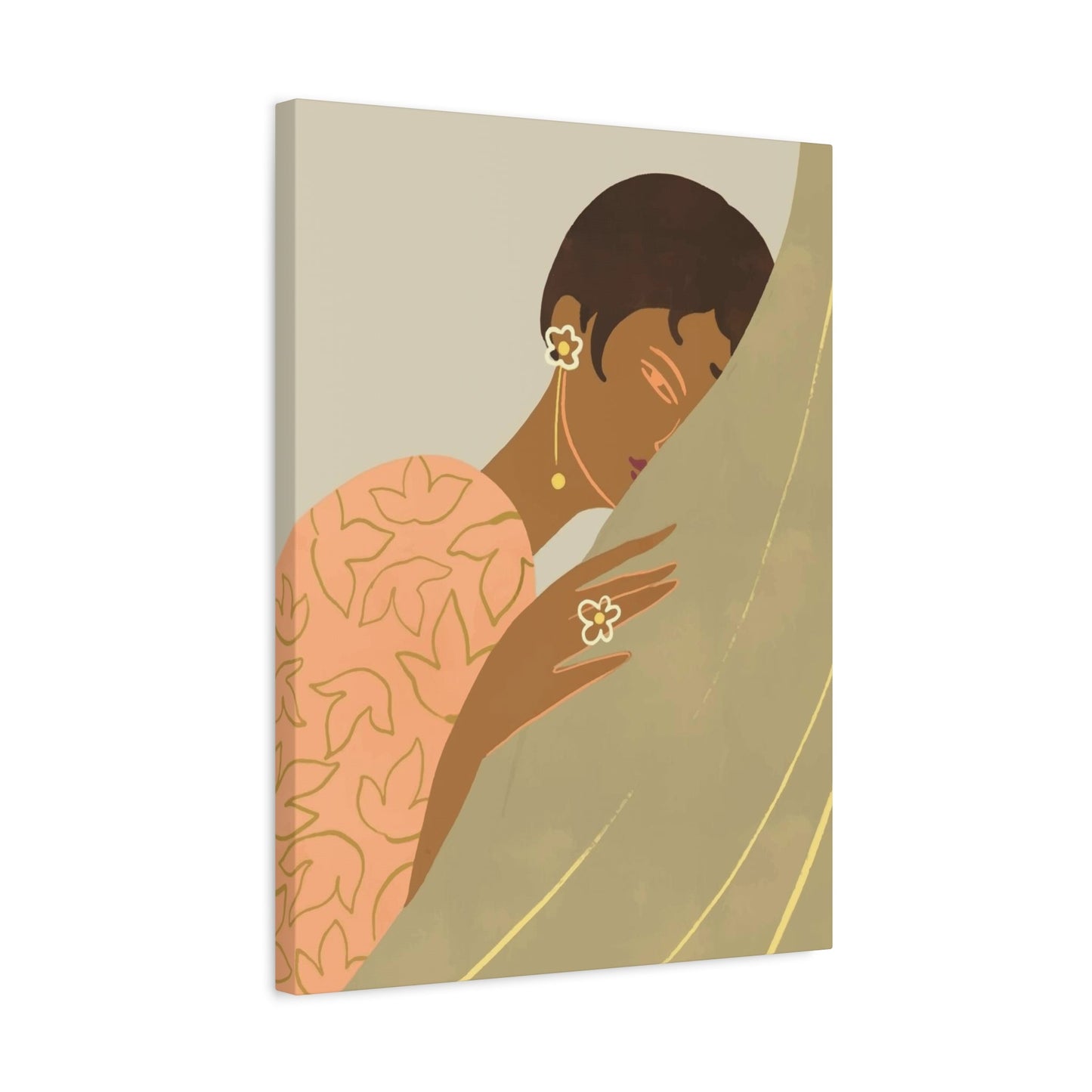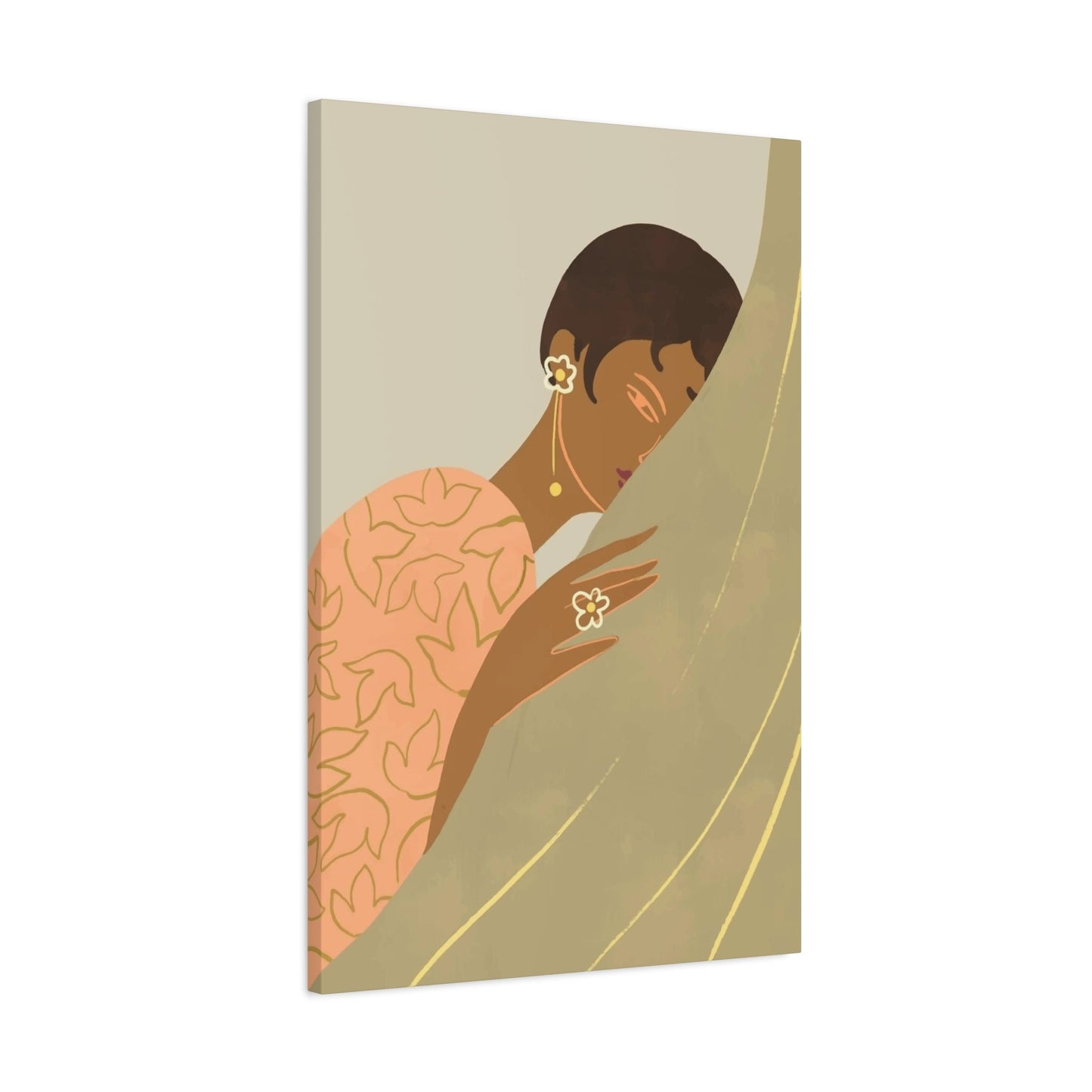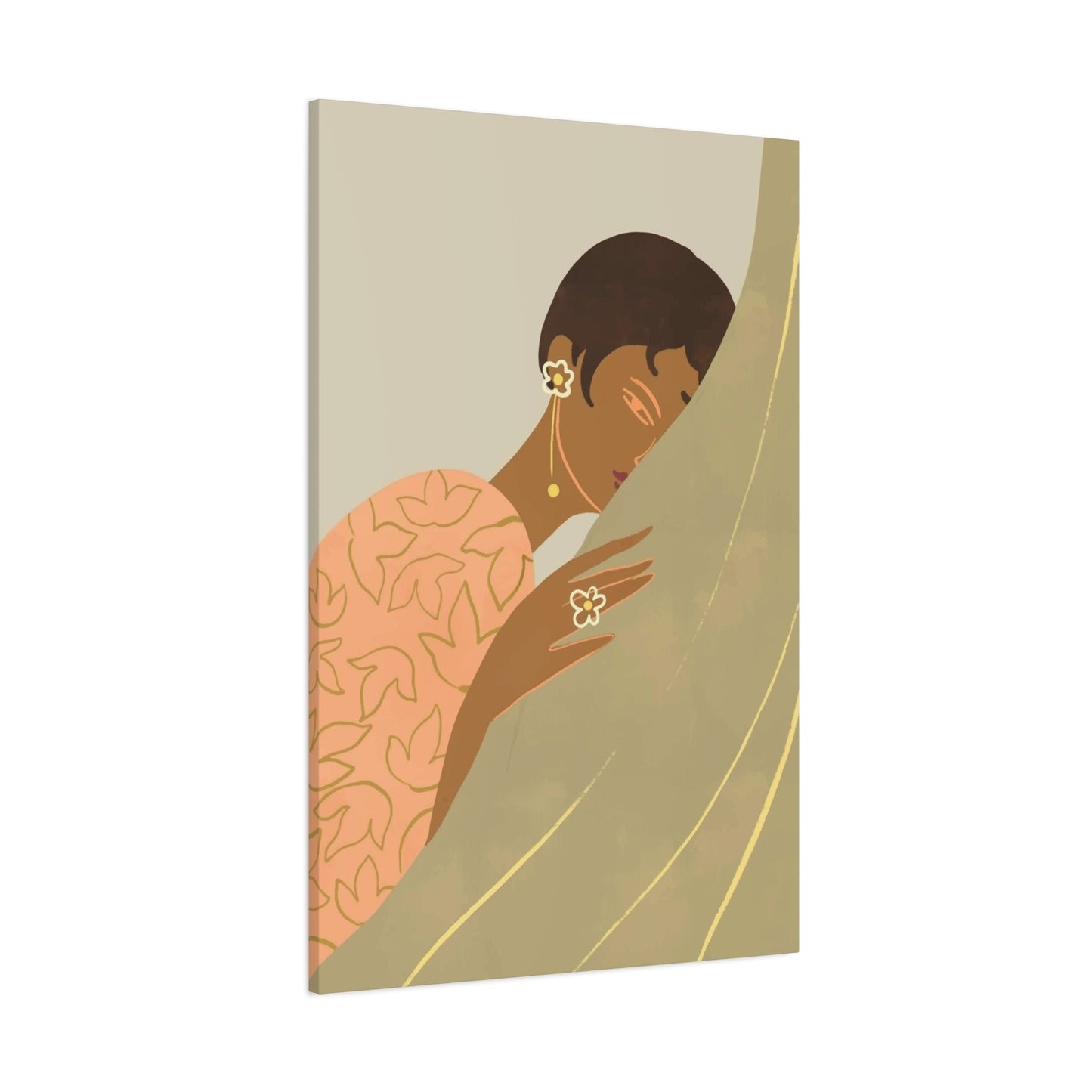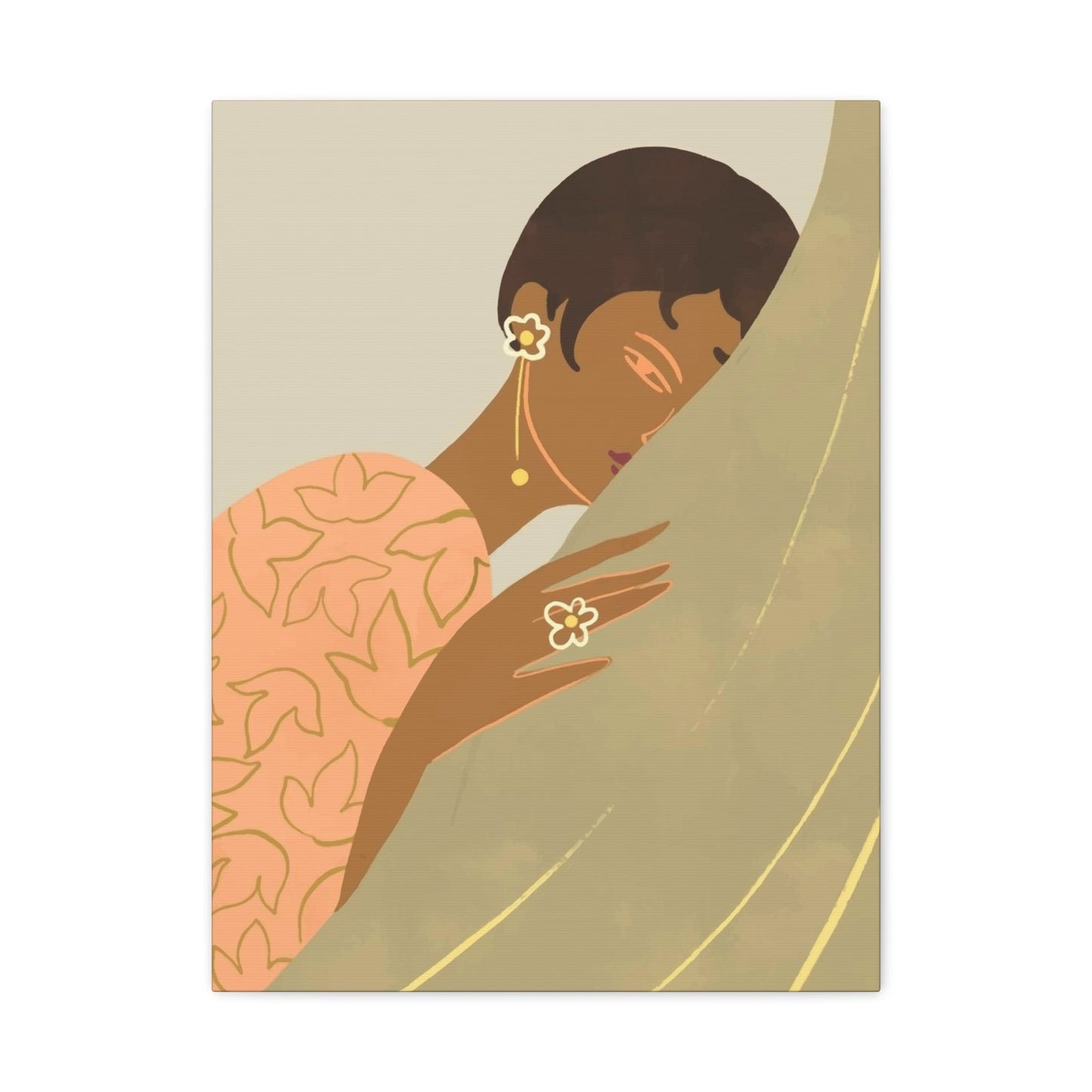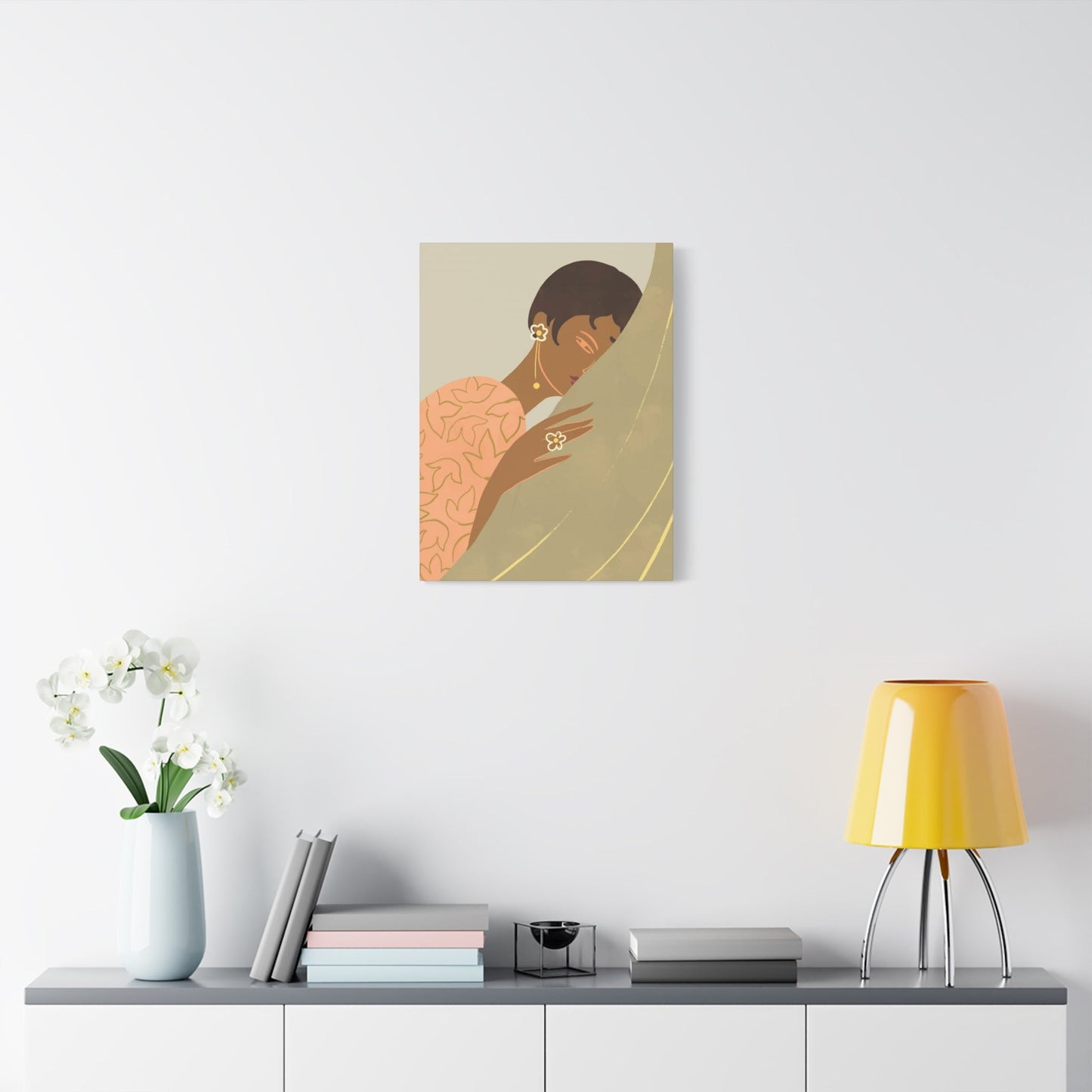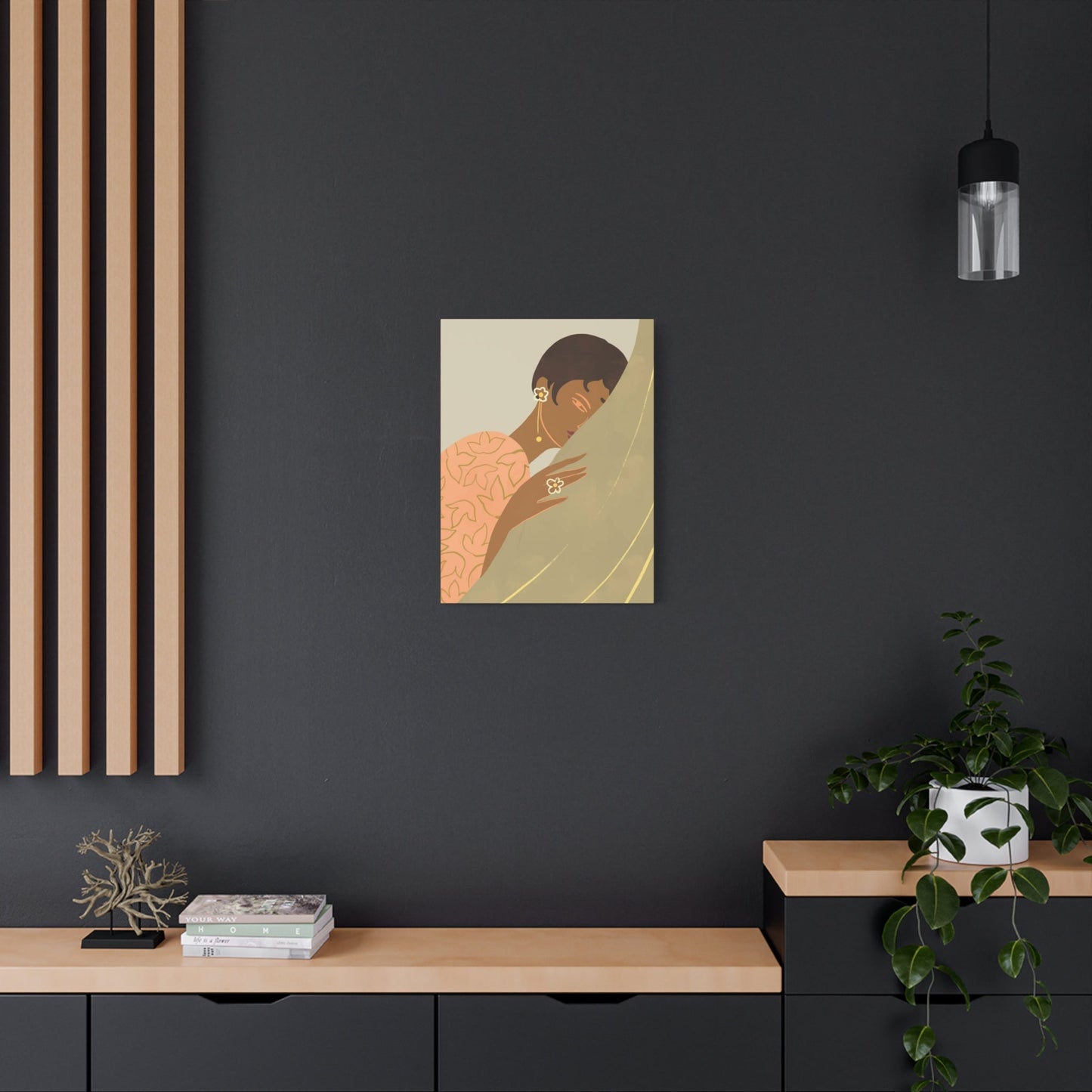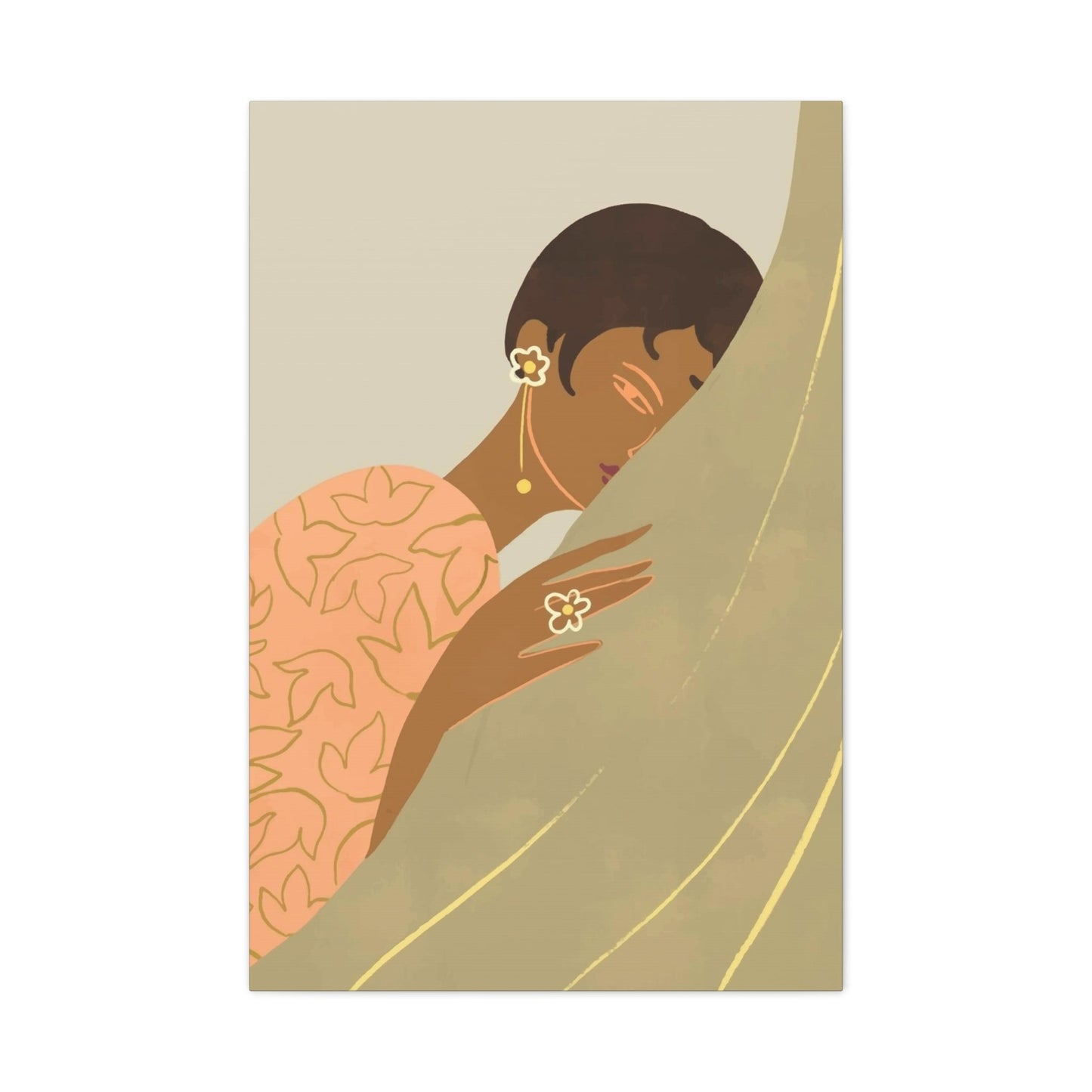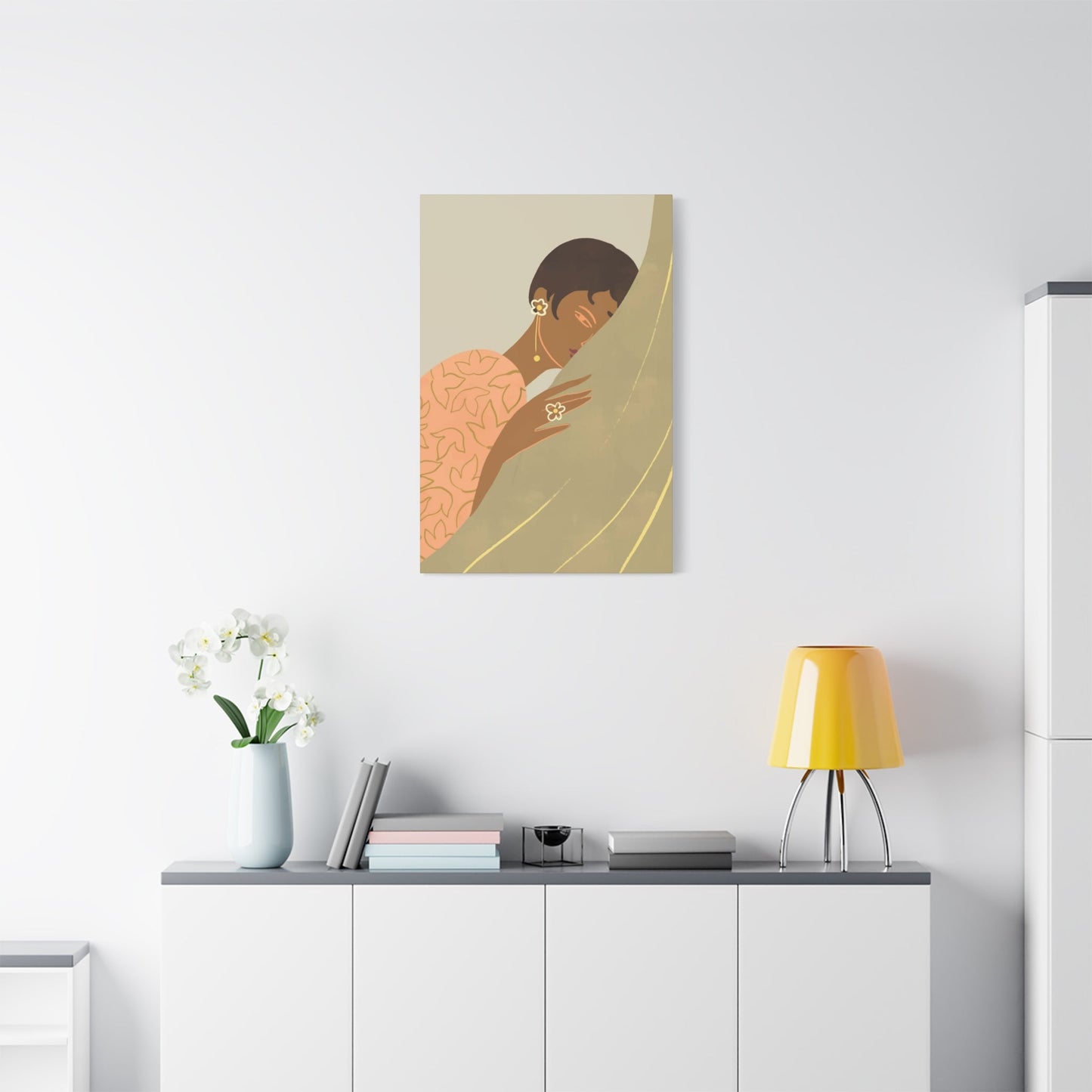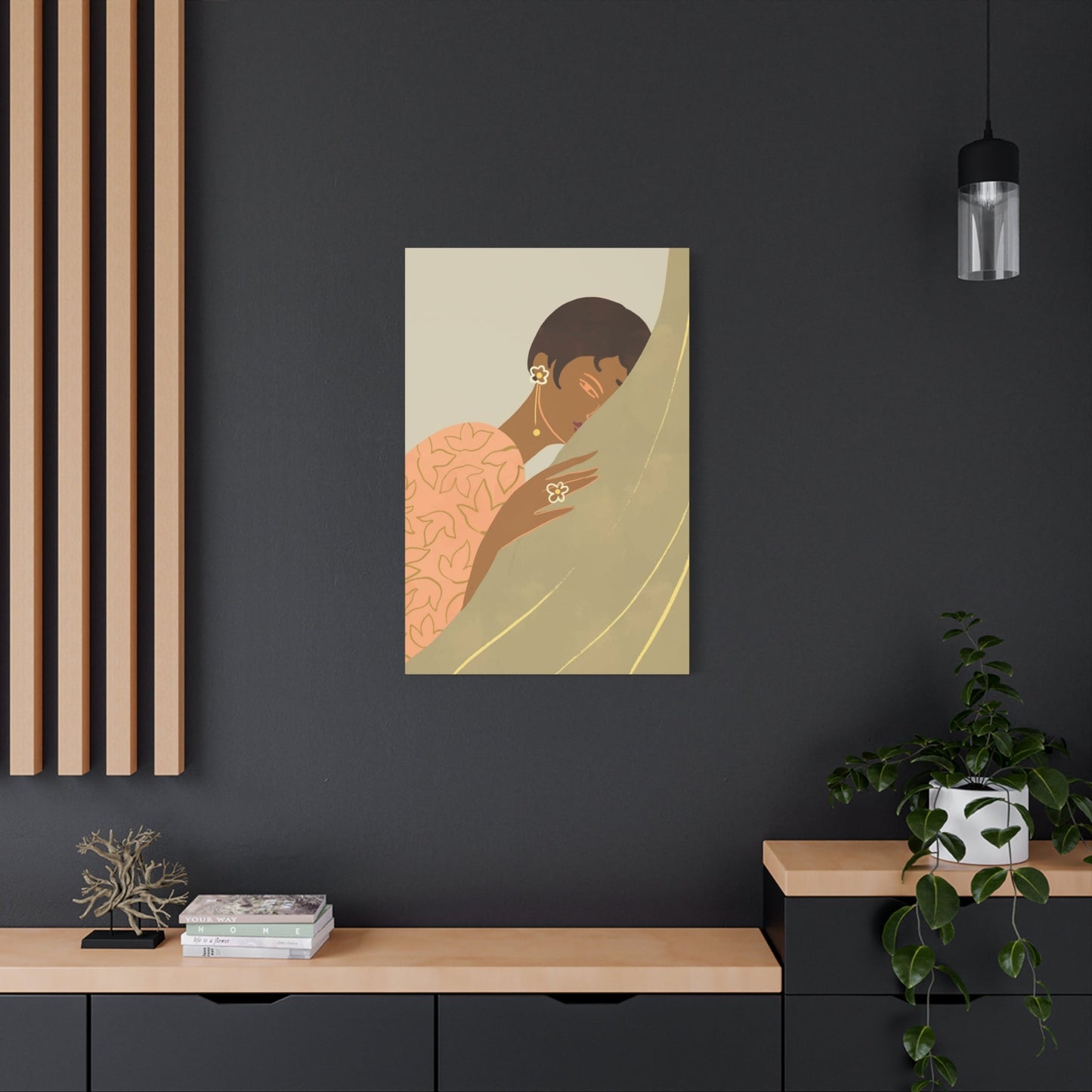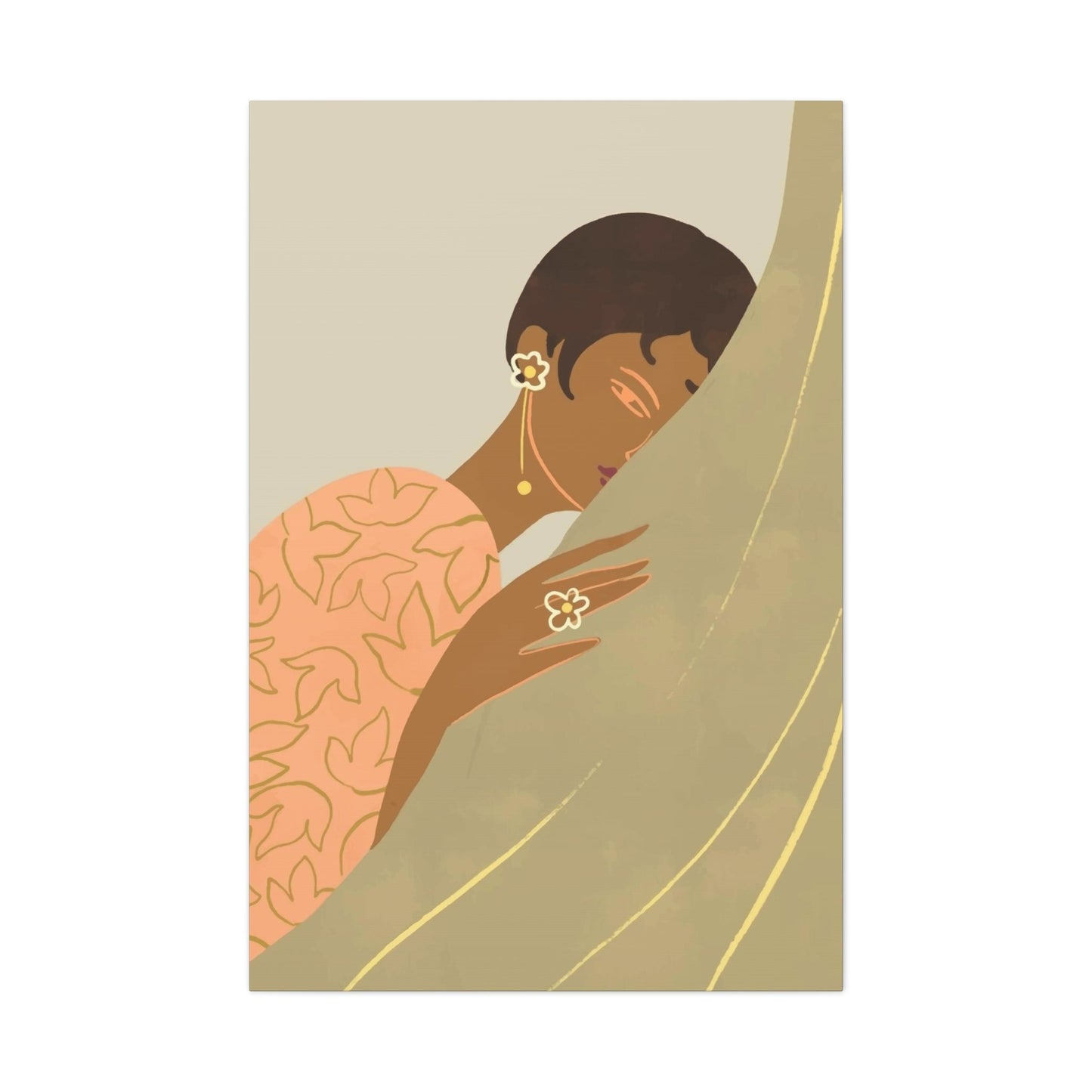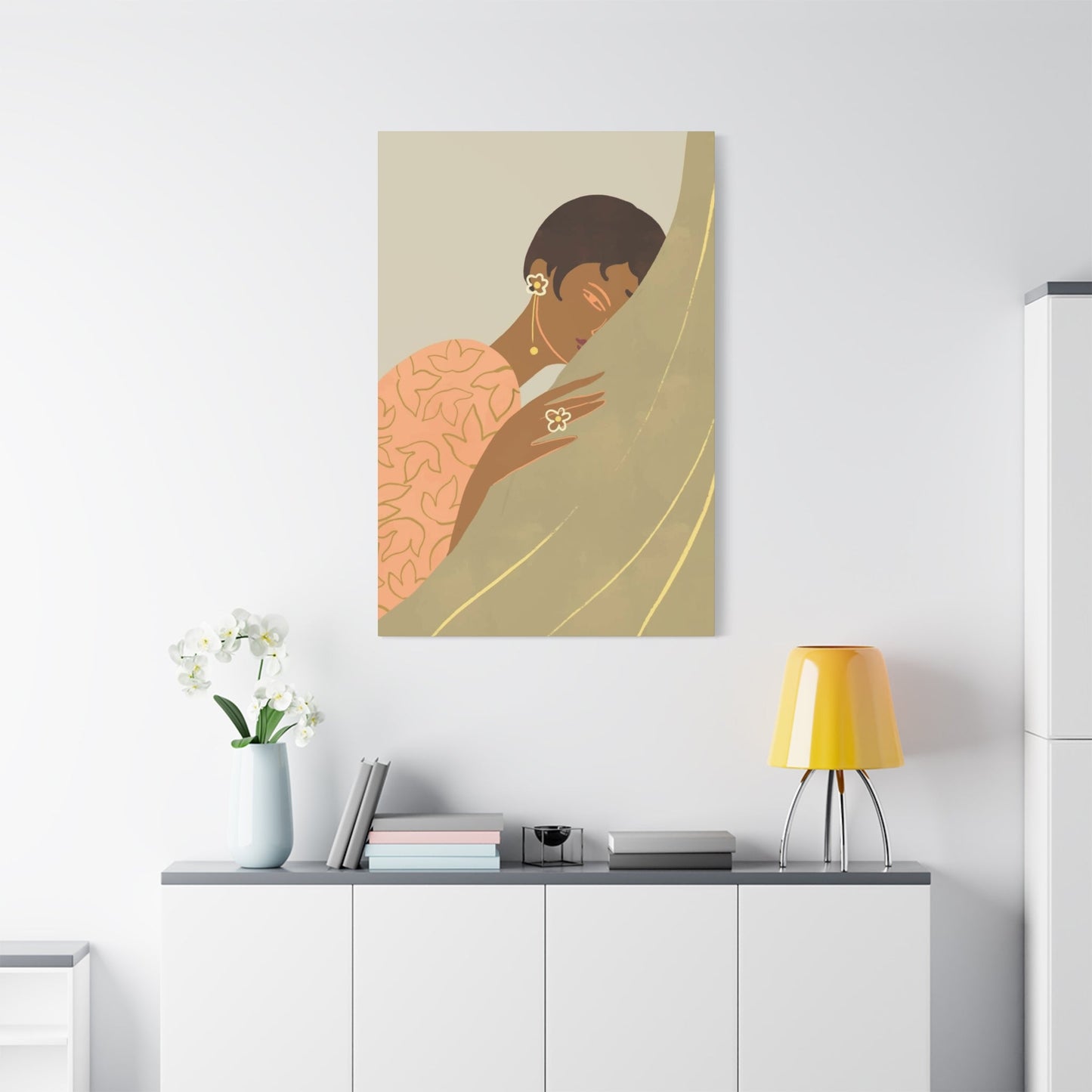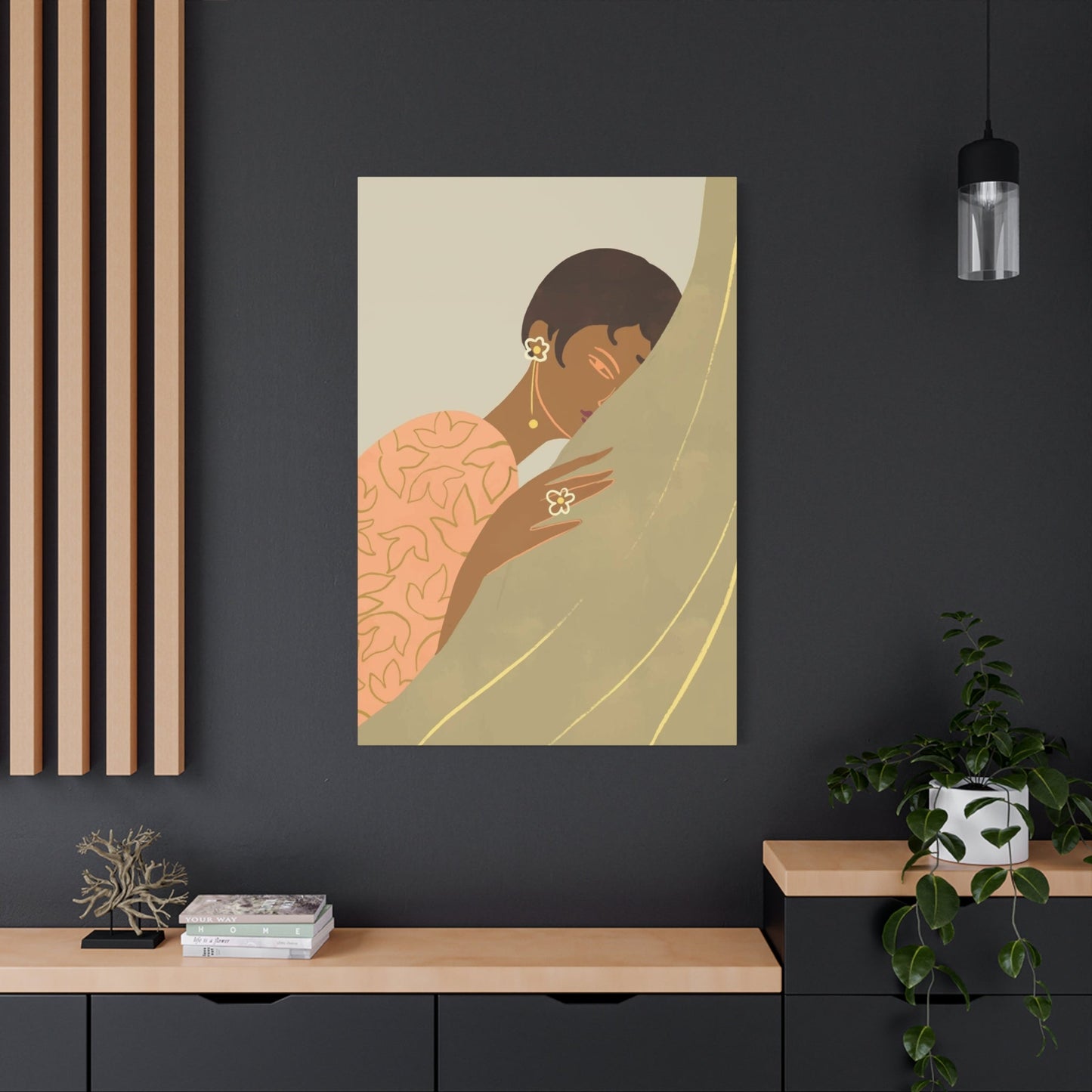Celebrating Feminine Power: Wall Art Embracing Every Aspect of Womanhood
Visual representations of femininity have adorned walls throughout human history, serving as reminders of strength, grace, resilience, and beauty. These artistic expressions capture the multifaceted nature of being a woman, reflecting experiences that range from quiet contemplation to fierce determination. Whether displayed in homes, offices, or public galleries, such artwork creates meaningful connections with viewers while celebrating the diverse experiences of women across cultures and generations.
The power of visual storytelling lies in its ability to communicate complex emotions and narratives without words. When we choose pieces that reflect feminine experiences, we create environments that acknowledge and honor the contributions, struggles, and triumphs of women throughout time. These visual narratives serve not only as decoration but as daily affirmations of value, capability, and inherent worth.
Contemporary artists continue to explore themes related to feminine identity through various mediums, from traditional paintings to mixed media installations. Each piece offers a unique perspective on what it means to navigate the world as a woman, capturing moments of vulnerability, celebration, introspection, and power. The accessibility of such artwork has grown significantly, allowing more people to curate collections that resonate with their personal experiences and values.
Choosing artwork that celebrates femininity involves considering multiple factors including aesthetic preferences, emotional resonance, and the stories you wish to surround yourself with daily. The right pieces can inspire confidence, provide comfort during difficult times, and serve as conversation starters that open dialogues about important issues. They become more than mere decorations, they become touchstones that ground us in our identities and remind us of our connections to the broader community of women across time and place.
Powerful Symbols of Womanhood in Art
Throughout artistic history, certain symbols have emerged repeatedly to represent various aspects of feminine experience and power. These visual metaphors carry deep cultural significance and continue to resonate with contemporary audiences. The lotus flower, for instance, appears frequently in artwork celebrating femininity, representing purity, enlightenment, and the ability to rise beautifully from murky waters. This symbolism speaks to resilience and the capacity to maintain grace despite challenging circumstances.
Birds in flight represent freedom and the breaking of constraints that have historically limited women's choices and opportunities. When depicted in artwork, they symbolize the journey toward autonomy and self-determination. Eagles suggest fierce independence and sharp vision, while doves communicate peace and nurturing qualities. The choice of bird often reflects the specific aspect of feminine experience the artist wishes to emphasize.
The moon appears as another powerful symbol in feminine-themed artwork, representing cycles, intuition, and the mysterious aspects of feminine energy. Its phases mirror natural cycles and suggest the importance of honoring different seasons of life. Crescent moons often appear in pieces focusing on new beginnings, while full moons represent completion and manifestation of intentions.
Water serves as a versatile symbol in artwork celebrating femininity, representing emotional depth, adaptability, and the life-giving properties associated with motherhood and nurturing. Oceans suggest vastness and power, rivers communicate flow and the passage of time, while still waters indicate calm reflection and inner peace. Artists manipulate water imagery to convey different emotional states and experiences.
Crowns and other regalia frequently appear in contemporary pieces, reclaiming the concept of feminine royalty and inherent worth. These symbols reject the need for external validation, instead asserting that every woman possesses inherent value and deserves to be treated with dignity. The crown becomes a visual statement of self-recognition and empowerment.
Hands appear prominently in symbolic representations, whether reaching toward the sky in aspiration, clasped in prayer or solidarity, or engaged in creative work. Hand imagery can communicate connection, healing, creation, and the tangible ways women shape their worlds. The positioning and context of hands within compositions adds layers of meaning to the overall piece.
Flowers beyond the lotus also carry symbolic weight in feminine-themed artwork. Roses represent passion and beauty, sunflowers suggest warmth and optimism, while wildflowers communicate freedom and natural authenticity. Artists select floral imagery carefully to enhance the emotional message of their work.
Keys symbolize access, unlocking potential, and opening doors to new opportunities. In artwork celebrating femininity, keys might represent education, voting rights, career advancement, or personal liberation. They serve as reminders of progress made and work still needed to ensure equal access for all women.
Mountains in artwork represent obstacles overcome and the strength required to reach new heights. They communicate perseverance, ambition, and the satisfaction of achieving difficult goals. When combined with figures of women, mountains emphasize capability and determination.
Butterflies symbolize metamorphosis and the beautiful outcomes possible when we allow ourselves to change and grow. They represent the journey from one state of being to another, acknowledging that growth often requires leaving behind what no longer serves us. This symbolism resonates particularly with women navigating life transitions.
Abstract Interpretations of Womanhood
Abstract artwork offers unique opportunities to explore feminine themes without relying on literal representations. Through color, form, texture, and composition, abstract pieces can communicate emotional truths and experiences that resist simple description. These works invite personal interpretation, allowing viewers to bring their own experiences and perspectives to the artwork.
Bold sweeps of color across canvases can represent the intensity of emotions associated with feminine experiences. Deep purples might suggest wisdom and spirituality, vibrant oranges communicate creativity and enthusiasm, while soft pinks reference gentleness without suggesting weakness. Artists working in abstract styles use color theory deliberately to evoke specific emotional responses.
Geometric patterns in abstract pieces celebrating femininity often incorporate circles, which represent wholeness, community, and cyclical nature. Triangles pointing upward suggest aspiration and growth, while flowing curves communicate fluidity and grace. The interplay between sharp and soft elements can represent the duality present in feminine experiences.
Layered textures in abstract paintings mirror the complexity of women's lives and identities. Multiple layers of paint, collage elements, or mixed media components suggest the many roles women occupy simultaneously. The depth created through layering invites closer inspection, rewarding viewers who take time to examine the piece carefully.
Splashes and drips of paint can represent the messy, imperfect reality of daily life while still creating something beautiful overall. This technique rejects the pressure for perfection that women often face, instead celebrating authenticity and the beauty found in natural expression.
Negative spaces in abstract compositions serve important functions, representing rest, breath, and the importance of what is not said or done. These empty areas remind viewers that balance requires both action and stillness, both speaking and listening.
Color gradients that shift gradually from one hue to another can represent transitions and the fluid nature of identity. Rather than presenting femininity as a fixed state, these gradients acknowledge that experiences and self-perception evolve throughout life.
Fractured or fragmented elements in abstract pieces might address feelings of being pulled in multiple directions or the challenge of integrating different aspects of identity. When these fragments are arranged into cohesive compositions, they suggest that wholeness can emerge from apparent brokenness.
Repetitive patterns in abstract artwork can represent daily rituals, the rhythms of life, or the ways small actions accumulate into significant impacts. These patterns might be soothing in their predictability or dynamic in their energy, depending on the artist's intention.
Contrast between light and dark areas explores the full spectrum of human experience, acknowledging that joy and sorrow, strength and vulnerability, coexist within each person. Rather than presenting an idealized version of femininity, these contrasts honor authentic experience.
Movement suggested through brushstrokes or composition creates dynamic energy that can represent ambition, change, or the refusal to remain static. Even when frozen on canvas, these pieces communicate motion and forward momentum.
Emotional Depth in Womanhood Wall Art
Artwork celebrating femininity often prioritizes emotional authenticity over idealized representations. These pieces acknowledge the full range of human emotions, validating experiences that have sometimes been dismissed or minimized. By depicting complex emotional states, artists create opportunities for recognition and connection.
Contemplative pieces featuring solitary figures lost in thought honor the importance of reflection and introspection. These quiet moments of self-examination are essential for personal growth and self-awareness. Artwork depicting contemplation validates the need for stillness in increasingly busy lives.
Joy expressed through artwork can take many forms, from exuberant celebrations to quiet contentment. Pieces capturing joyful moments remind viewers to notice and appreciate positive experiences. The representation of joy in artwork celebrating femininity often emphasizes communal celebration and shared happiness rather than individual achievement alone.
Sorrow and grief receive honest treatment in emotionally authentic artwork, acknowledging that loss and pain are universal human experiences. Rather than shying away from difficult emotions, these pieces create spaces for processing and healing. They communicate that experiencing sadness does not diminish strength or worth.
Anger depicted in artwork can be particularly powerful, as women's anger has historically been dismissed or pathologized. Pieces that honestly represent justified anger validate this emotion and challenge viewers to consider its sources. This representation serves as a reminder that anger can be a catalyst for necessary change.
Tenderness in artwork celebrates the capacity for gentleness, care, and emotional availability. These pieces honor nurturing qualities without suggesting they are exclusively feminine or obligatory. Instead, they present tenderness as a choice and a gift rather than an expectation.
Vulnerability depicted visually requires courage from both artist and viewer. Pieces showing emotional openness challenge the armor many people develop to protect themselves. They suggest that allowing others to see our true selves, despite the risk of judgment or rejection, creates possibilities for genuine connection.
Determination shines through in artwork featuring focused expressions and purposeful postures. These pieces communicate that achieving goals requires sustained effort and commitment. They serve as visual encouragement during challenging pursuits.
Confusion and uncertainty find representation in pieces with ambiguous elements or questions implied through composition. These works acknowledge that clarity is not always possible and that navigating ambiguity is a normal part of life.
Love in its many forms appears throughout artwork celebrating femininity, including romantic love, maternal love, friendship, and self-love. Each type of love receives treatment that honors its unique qualities and challenges.
Peace radiates from artwork featuring serene compositions, gentle color palettes, and harmonious arrangements. These pieces offer viewers a sense of calm and serve as visual reminders to seek balance in their own lives.
Cultural Stories Told Through Womanhood Art
Artists from diverse cultural backgrounds contribute unique perspectives on feminine experiences, enriching the global conversation about what it means to be a woman. These cultural narratives preserve traditions while also documenting how women navigate changing societies. Artwork becomes a vehicle for passing down stories, values, and wisdom across generations.
African artistic traditions often celebrate community and the central role women play in family and social structures. Bold patterns, vibrant colors, and powerful figures characterize much of this artwork. Contemporary African artists blend traditional motifs with modern techniques to create pieces that honor heritage while addressing current realities.
Asian artistic traditions bring philosophical depth to representations of femininity, often incorporating concepts like balance, harmony, and the relationship between humanity and nature. From Japanese prints to Chinese scroll paintings to Indian miniatures, these traditions offer rich visual languages for exploring feminine themes.
Latin American artwork frequently celebrates fierce independence and revolutionary spirit. Artists from this region often address social justice issues while celebrating the strength and resilience of women who have fought for their communities. Vivid colors and dynamic compositions characterize much of this work.Middle Eastern artistic traditions navigate complex cultural expectations while asserting women's voices and perspectives. Contemporary artists from this region create powerful works that challenge stereotypes and present nuanced portraits of women's lives.
Indigenous artistic traditions from various continents bring spiritual perspectives to representations of femininity, often emphasizing connections to land, ancestry, and community. These works preserve important cultural knowledge while asserting the ongoing presence and contributions of indigenous women.European artistic traditions have evolved significantly over centuries, from classical representations to contemporary explorations. Modern European artists often interrogate historical depictions of women while creating new narratives that reflect current values and experiences.
Caribbean artistic traditions celebrate vibrant cultures shaped by complex histories. Artists from this region create works that honor African, European, and indigenous influences while asserting distinct Caribbean identities.Pacific Islander artistic traditions emphasize connection to ocean and land while celebrating women's traditional roles and contemporary contributions. These works often feature natural materials and motifs significant to specific island cultures.
Diaspora artists create works that navigate multiple cultural identities, exploring what it means to belong to more than one cultural tradition. These pieces often address themes of migration, adaptation, and maintaining cultural connections across distances.Cross-cultural collaborations produce artwork that celebrates shared experiences while honoring cultural differences. These projects demonstrate that while specific cultural contexts vary, many aspects of feminine experience resonate across boundaries.
Feminine Strength Captured on Canvas
Physical and emotional strength find powerful expression in artwork celebrating femininity. These pieces challenge outdated assumptions about weakness or fragility, instead presenting women as capable, resilient, and powerful. Visual representations of strength validate experiences and inspire confidence.Athletic figures captured mid-motion celebrate physical capability and the joy of inhabiting strong bodies. Whether running, dancing, climbing, or engaged in sport, these figures communicate that physical strength is not incompatible with femininity but rather one expression of it.
Working women depicted engaged in various professions challenge limited ideas about appropriate roles. From scientists and artists to laborers and leaders, these representations expand the visual vocabulary of what women can be and do.Maternal strength receives recognition in artwork depicting pregnancy, childbirth, and parenting. These pieces acknowledge the physical demands and emotional intensity of motherhood while celebrating the capability required.
Elderly women portrayed with dignity and presence challenge cultural obsessions with youth. These representations honor the wisdom, experience, and continued vitality of older women, asserting their ongoing value and contributions.Warriors and fighters appear in both historical and fantastical contexts, representing the willingness to defend oneself and others. Whether depicting actual historical figures or symbolic representations, these images communicate that women have always participated in struggle and resistance.
Survivors of various hardships are depicted with compassion and respect, honoring both their experiences and their resilience. These pieces acknowledge trauma without defining individuals solely by what they have survived.Leaders and change-makers appear in artwork celebrating women who have shaped history and those currently working toward better futures. These representations inspire viewers while documenting important contributions.
Everyday courage finds celebration in pieces depicting women navigating daily challenges with determination. These works acknowledge that strength is not only demonstrated in extraordinary circumstances but also in consistent choices to persevere.Mental fortitude receives visual representation through figures maintaining composure during storms or standing firm against symbolic adversity. These images communicate that inner strength is as important as physical capability.
The Beauty of Growth: Womanhood Themes
Personal growth and development appear as central themes in much artwork celebrating femininity. These pieces document journeys of self-discovery, healing, and becoming more fully oneself. They acknowledge that growth is ongoing rather than a destination reached once and then complete.Emerging from darkness into light represents overcoming difficult periods and finding hope. These visual metaphors communicate that brighter times follow dark seasons, encouraging viewers who currently face challenges.
Shedding old skins, like snakes, symbolizes releasing outdated beliefs, relationships, or patterns that no longer serve. This imagery honors the difficulty of letting go while celebrating the freedom that follows.Seeds sprouting and plants growing represent potential being realized through patient nurturing. These natural metaphors remind viewers that growth takes time and requires appropriate conditions.
Doorways and thresholds appear in artwork focused on growth, representing transition points between one phase of life and another. These images honor the courage required to step through into unknown territory.Mirrors in artwork can represent self-examination and the ongoing process of coming to know oneself more deeply. They might show clear reflections or distorted ones, depending on whether the piece explores clarity or confusion about identity.
Paths winding into distance suggest that journeys continue beyond what is currently visible. These compositions acknowledge that growth is ongoing and that future developments remain to be discovered.Breaking through barriers literally depicted as walls, chains, or restraints represents overcoming limitations whether internal or external. These powerful images celebrate liberation and expanded possibilities.
Reaching upward toward sky or light communicates aspiration and the desire for continued development. These images inspire viewers to pursue their own growth and not settle for less than they might become.Root systems depicted below ground remind viewers that visible growth depends on hidden foundations. These images honor the unseen work of building character, developing skills, and processing experiences.Seasonal cycles shown through multiple panels or repeated motifs acknowledge that growth is not linear. These pieces communicate that periods of apparent dormancy are natural and necessary parts of ongoing development.
Soft and Strong: Duality in Womanhood Art
Many pieces celebrating femininity explore the coexistence of qualities traditionally viewed as opposites. Rather than presenting women as either gentle or powerful, vulnerable or capable, these works embrace complexity and contradiction. They assert that human beings contain multitudes and need not choose between seemingly opposing qualities.Armor and flowers combined in single compositions visually represent the union of protection and openness, strength and beauty. These unexpected pairings challenge viewers to reconsider categories they may have assumed were mutually exclusive.
Fierce expressions combined with graceful postures communicate that determination and elegance enhance rather than diminish each other. These figures refuse to soften their edges or harden their hearts, instead maintaining both qualities simultaneously.Pastel color palettes used in compositions featuring powerful imagery subvert expectations about what soft colors can communicate. By pairing gentle hues with strong subjects, artists challenge associations between specific colors and particular qualities.
Delicate materials like watercolor or silk employed to depict powerful subjects create interesting tensions. The contrast between fragile medium and strong subject matter becomes itself meaningful.Vulnerable moments captured with dignified composition honor openness without suggesting weakness. These pieces communicate that allowing oneself to be seen fully requires great courage.
Nurturing gestures shown alongside symbols of personal achievement assert that caring for others and pursuing individual goals are not mutually exclusive. These works challenge false choices between self and others.Rest and action depicted in related pieces or within single compositions acknowledge that both are necessary. These works validate the need for recovery and renewal rather than constant productivity.
Scars and beauty marks treated as enhancements rather than flaws celebrate bodies that show evidence of lives fully lived. These representations challenge narrow beauty standards.Tears and smiles appearing together acknowledge that joy and sorrow often intermingle. These honest representations reject pressure to maintain only positive expressions.Youth and age shown in relationship whether through portraits at different life stages or figures of different generations appearing together celebrate continuity and change across the lifespan.
Nature and Womanhood: Inspiring Wall Pieces
Natural imagery appears frequently in artwork celebrating femininity, drawing connections between women and the natural world. These pieces might explore fertility, cyclical patterns, growth, or the power present in natural forces. The association between femininity and nature has complex history, and contemporary artists navigate this carefully, seeking to celebrate connections without reducing women to biological functions.
Mountains appearing behind or alongside female figures suggest strength, permanence, and the ability to withstand storms. These compositions communicate stability and groundedness while also referencing the heights to which one might climb.Forests dense with trees and rich with life represent community, the many supporting the individual, and the importance of root systems invisible from above. These scenes might include solitary figures finding peace among trees or groups gathered in natural cathedral-like settings.
Oceans with their vastness and depth frequently appear in compositions exploring emotional complexity. Calm seas might represent peace while stormy waters acknowledge turmoil. The constant motion of waves suggests ongoing change.Gardens cultivated and tended represent the fruits of patient labor and the satisfaction of nurturing growth. These ordered natural settings differ from wilderness, suggesting the beauty possible when humans work in harmony with natural processes.
Deserts with their austere beauty appear in artwork addressing resilience, survival, and finding beauty in harsh conditions. These landscapes honor those who endure difficult circumstances while maintaining their essential selves.Night skies filled with stars suggest mystery, dreams, and the vastness of possibility. These expansive views encourage viewers to think beyond immediate circumstances and consider broader perspectives.
Sunrise and sunset moments capture transitions and the reliable pattern of endings giving way to new beginnings. These daily celestial events provide reassuring reminders of ongoing cycles.Rivers flowing represent the passage of time and the shaping power of persistent gentle force. River imagery acknowledges that we cannot step in the same water twice, emphasizing constant change.Seasons shown in series document the natural cycles of growth, abundance, decline, and renewal. These sequences normalize the ebb and flow of energy and productivity.
Weather phenomena like rain, wind, and sunshine receive treatment that explores their metaphorical dimensions. Rain might represent cleansing or sadness, wind suggests change or spirit, while sunshine communicates hope and warmth.
Modern Takes on Traditional Womanhood Art
Contemporary artists reinterpret historical approaches to feminine subjects, bringing current perspectives to traditional forms. These modern takes might challenge historical representations, celebrate aspects worth preserving, or create entirely new synthesis of old and new. The dialogue between tradition and innovation enriches both.Classical portraiture receives updates through contemporary styling, diverse representation, and subjects positioned as active agents rather than passive objects of the gaze. These pieces honor portraiture traditions while correcting historical exclusions and problematic dynamics.
Mythological figures reimagined from contemporary perspectives offer new interpretations of ancient stories. Artists might give voice to previously silent characters, question traditional narratives, or explore how ancient myths continue to resonate.Religious imagery reinterpreted through feminist lenses creates powerful pieces that honor spiritual traditions while challenging patriarchal interpretations. These works assert women's spiritual authority and importance.
Domestic scenes historically used to confine women to limited roles receive treatment that celebrates the skill and artistry in traditionally feminine crafts and labors. These pieces honor contributions historically dismissed as merely utilitarian.Pin-up aesthetics reclaimed and subverted create images that celebrate sexuality on women's own terms rather than primarily for male consumption. These pieces navigate complex territory around display, desire, and agency.
Renaissance techniques applied to contemporary subjects bridge centuries, using methods developed by old masters to depict modern women in current contexts. The contrast between traditional technique and contemporary subject creates interesting tensions.Folk art traditions from various cultures adapted to address current issues maintain cultural continuity while asserting relevance. These pieces demonstrate that traditional forms remain vital vehicles for contemporary expression.
Victorian sentimentality questioned and complicated through modern lenses examines how historical periods represented femininity and what those representations reveal about cultural values.Art Nouveau curves and natural motifs popular in the early 20th century reappear in contemporary work, their flowing lines and nature imagery lending themselves well to feminine themes.Modernist principles of simplification and essential form influence contemporary pieces that strip away extraneous elements to focus on core truths about feminine experience.
Womanhood and Identity: Artistic Expressions
Questions of identity appear centrally in much artwork celebrating femininity. Who am I? How do I relate to others? What makes me uniquely myself versus part of larger communities? Artists explore these questions through various visual strategies, creating pieces that invite viewers to consider their own identities.Mirrors as literal and metaphorical devices appear frequently, sometimes showing clear reflections and other times distorted or fragmented images. These variations explore clarity and confusion about identity, integration and fragmentation of self.
Multiple selves shown in single compositions acknowledge that we contain various aspects and may present differently in different contexts. These pieces validate the complexity of human personality rather than demanding simple consistency.Masks removed or worn explore authenticity versus social performance. These works ask when we show true selves versus when we adopt personas for various audiences or purposes.Intersectionality receives visual representation in pieces acknowledging that identity includes multiple dimensions including race, culture, class, sexuality, ability, and others. These works assert that these aspects cannot be separated but rather interact to create unique experiences.
Labels literally shown being removed or rejected appear in artwork challenging limiting categories and external definitions. These pieces assert the right to self-definition.Transformation shown through before-and-after sequences or composite images documents identity evolution. These pieces communicate that we are not static but rather constantly becoming.Roots and branches appearing together suggest both where we come from and where we might grow. These natural metaphors help viewers think about the relationship between origin and destiny.
Questions literally posed through text integration invite viewer participation in identity exploration. These pieces suggest that questions may be more valuable than definitive answers.Cultural markers including clothing, adornments, hairstyles, and other visual signifiers appear carefully rendered to honor their significance. These elements communicate cultural identity and pride.Blank or incomplete areas in otherwise finished pieces might represent aspects of identity still unknown or under development. These spaces acknowledge that self-understanding is ongoing.
Minimalist Art Celebrating Womanhood
Minimalist approaches to feminine themes prove that simplicity need not mean lack of meaning. By stripping away extraneous elements, minimalist artists direct attention to essential truths. These pieces often work through implication and suggestion rather than explicit detail.Line drawings capturing figures with just a few strokes demonstrate how much can be communicated economically. The elegant simplicity of these works appeals to contemporary aesthetic preferences while maintaining emotional impact.
Limited color palettes often featuring just two or three hues create visual cohesion and allow form to take precedence. Monochromatic pieces in particular emphasize shape, line, and composition over color variety.Negative space used extensively in minimalist compositions highlights what is absent as much as what is present. These pieces invite contemplation and allow room for viewer interpretation.
Simplified forms that suggest rather than explicitly depict their subjects engage viewer imagination. Rather than providing every detail, these pieces present essential elements and trust viewers to complete the image mentally.Geometric reduction of organic forms creates interesting abstraction while maintaining recognizable elements. A profile might become a simple arc and line, still clearly representing a human face while taking on sculptural quality.
Typography-based pieces using single words or short phrases communicate through language stripped to essentials. These text works might feature affirming words or challenging questions.Repetition of simple elements creates visual rhythm and can suggest meditation or mantra. These repeated motifs become almost hypnotic in their simplicity.
Balanced asymmetry in composition creates visual interest without busy complexity. These carefully constructed arrangements feel both intentional and effortless.Subtle texture added to otherwise smooth surfaces provides interest without visual noise. These gentle variations reward close examination while maintaining overall simplicity.Empty frames or outlined shapes suggest absence or potential, inviting viewers to imagine what might fill these spaces. These open elements create interactive quality even in static pieces.
Wall Art that Honors the Journey of Womanhood
Life journeys from childhood through elderhood receive treatment in artwork that honors all phases of feminine experience. Rather than privileging youth, these pieces assert that every age brings unique beauty, wisdom, and value. They document the ongoing nature of becoming rather than suggesting a fixed destination.Coming of age moments depicted with sensitivity honor the significance of transitions into adulthood. These pieces acknowledge both excitement and uncertainty inherent in these passages.
Young adulthood captured in artwork often explores themes of independence, possibility, and self-discovery. These pieces communicate the particular energy and optimism of this life phase while also acknowledging its challenges.Middle years receive representation that celebrates accumulated wisdom and capability while acknowledging the complexity of managing multiple responsibilities. These works honor the particular strengths developed through experience.
Motherhood journeys when included extend beyond idealized moments to include the full reality of parenting with its joys, frustrations, and transformations. These honest representations validate complex feelings.Career paths and professional identity receive treatment in pieces showing women engaged in various forms of work. These representations assert that professional accomplishment is one valid dimension of feminine experience.
Midlife transitions sometimes called crises but better understood as evolutions appear in artwork addressing reassessment and redirection. These pieces normalize the questioning that often accompanies middle age.Elder wisdom celebrated in portraits and figure studies of older women communicates that later years bring their own beauty and continued vitality. These representations challenge cultural devaluation of aging.
Loss and grief acknowledged through sensitive treatment appear in pieces honoring the reality that journeys include endings as well as beginnings. These works validate mourning as natural and necessary.Reinvention shown through imagery of new beginnings at various ages asserts that transformation remains possible throughout life. These pieces inspire viewers to believe in their capacity for change.Full life cycles sometimes depicted in series or through symbolic representation honor the complete arc from birth through death. These pieces place individual lives within larger contexts of continuity and change.
Celebrating Diversity in Womanhood Art
Inclusive representation in artwork celebrating femininity expands beyond limited historical precedents to honor women of all backgrounds, abilities, and experiences. These diverse representations matter both to those who see themselves reflected and to those who benefit from expanded understanding of human variety.Racial and ethnic diversity receives overdue attention from contemporary artists committed to correcting historical exclusions. These representations honor the beauty present in all human phenotypes and celebrate cultural distinctiveness.
Body diversity celebrated through representation of various sizes, shapes, and abilities challenges narrow beauty standards and asserts that all bodies deserve to be seen as beautiful. These pieces push back against harmful ideals.Age diversity already mentioned bears repeating as crucial component of inclusive representation. From children to elders, all ages appear in artwork celebrating the feminine experience.
Gender diversity acknowledged through inclusion of transgender women and non-binary individuals expands definitions of who belongs in conversations about feminine experience. These representations assert that gender is more complex than simplistic binaries suggest.Ability diversity shown through representation of disabled women challenges assumptions about capability and beauty. These pieces assert that disability is one aspect of human diversity deserving of representation.
Socioeconomic diversity reflected through depictions of women in various circumstances acknowledges that class shapes experience significantly. These representations resist tendency to depict only privileged experience.Geographic diversity achieved through artists working from locations worldwide ensures that perspectives are not limited to Western or urban viewpoints. Rural and non-Western experiences receive deserved attention.
Religious and spiritual diversity honored through sensitive representation of various faith traditions acknowledges that spirituality takes many forms. These pieces respect different belief systems.Family structure diversity shown through various configurations challenges the assumption that one family form is universal or ideal. These representations validate many ways of creating family.Sexual orientation diversity increasingly appears in contemporary artwork, with lesbian and bisexual women's experiences receiving greater representation. These works assert that all women deserve to see their lives reflected.
Spiritual and Mythical Womanhood in Paintings
Spiritual dimensions of feminine experience receive exploration through both religious and secular approaches. These pieces might draw on specific faith traditions or create more universal spiritual imagery. Mythical figures from various cultural traditions also appear, their stories reinterpreted for contemporary audiences.Goddesses from pantheons worldwide appear in contemporary artwork that honors ancient worship while making these figures accessible to modern viewers. From Greek and Roman deities to Hindu goddesses to indigenous spirits, these powerful feminine figures inspire.
Saints and holy women from various religious traditions receive treatment that honors their spiritual significance while humanizing them. These pieces make historical religious figures feel relevant to contemporary seekers.Meditation and prayer depicted visually communicate the importance of spiritual practice. These contemplative pieces create spaces for viewers' own reflection and connection with the divine or with deeper aspects of self.
Mystical experiences suggested through symbolic imagery explore transcendent moments and altered states of consciousness. These pieces acknowledge that spiritual experience often resists simple description.Healing practices both ancient and modern appear in artwork celebrating the spiritual dimensions of wellness. These pieces honor the connection between spirit, mind, and body.Ritual practices from various traditions receive respectful representation that honors their cultural significance. These works document the importance of structured spiritual practice.
Ancestors honored through portraiture and symbolic representation acknowledge the importance of those who came before. These pieces express gratitude and maintain connections across generations.Angels and spirit guides appearing in both traditional and contemporary forms provide comfort and suggest that guidance and protection are available.
Energy and auras depicted visually through color, light, and abstract elements suggest the non-physical dimensions of human existence. These pieces invite viewers to consider realities beyond the material world.Sacred geometry including mandalas, spirals, and other significant patterns appears in artwork exploring how mathematical forms carry spiritual meaning. These pieces unite rational and mystical dimensions.
Vintage Womanhood Portraits for Timeless Decor
Historical portraits of women offer windows into past eras while raising questions about how femininity has been represented across time. Contemporary artists create new work in vintage styles, while actual historical pieces find new audiences. These works allow for both appreciation and critical examination of how past generations understood feminine identity.Victorian era portraiture with its formal poses and elaborate costumes captures a particular historical moment. Modern viewers might appreciate the artistry while questioning the restrictions represented.
Art Deco period images from the 1920s and 1930s celebrate the modern woman of that era with sleek lines and geometric patterns. These pieces document a moment of expanded freedom and changing social roles.Mid-century modern aesthetics from the 1950s and 1960s offer distinctive visual styles that remain popular. Contemporary artists working in these styles might subvert period ideologies while maintaining visual appeal.
Renaissance-inspired portraits using techniques from the 14th through 17th centuries create connection to art historical traditions. Modern subjects rendered in classical styles bridge centuries.Baroque drama and movement influences contemporary portraits that embrace theatricality and emotional intensity. The dynamic quality of baroque art translates well to contemporary themes.Rococo delicacy and ornate decoration characterizes some contemporary work drawing on 18th century traditions. The elaborate beauty of this style suits celebratory themes.
Pre-Raphaelite romanticism from the 19th century influences contemporary work through its attention to natural detail and literary inspiration. The movement's idealization of feminine beauty remains influential.Arts and Crafts movement emphasis on handcraft and natural materials inspires contemporary artists valuing similar principles. The movement's philosophy resonates with current concerns about mass production.Harlem Renaissance period artwork documenting African American experience in the 1920s and 1930s offers important historical perspective. Contemporary artists carry forward this tradition.
Conclusion
Celebrating feminine power through wall art is a meaningful tribute to the diverse and dynamic experiences that shape womanhood. This art form embraces every aspect of femininity—from strength and resilience to grace and vulnerability—creating a visual narrative that honors the complexity and beauty of women’s lives. Through bold imagery, expressive styles, and symbolic motifs, feminine power wall art inspires, empowers, and connects us to the universal journey of self-discovery and empowerment.
Throughout this exploration, it’s clear that feminine power is not monolithic but multifaceted. Wall art capturing this power reflects a wide spectrum of emotions and identities, from fierce determination to nurturing warmth. These artworks serve as visual affirmations that celebrate the varied roles women play—as leaders, creators, caretakers, and visionaries—reminding us of the strength found in embracing all parts of ourselves.
Incorporating feminine power wall art into your home decor is more than an aesthetic choice; it is an expression of values and identity. Such pieces bring energy and inspiration to any room, transforming ordinary walls into powerful statements. Whether displayed as singular focal points or as part of a curated gallery, these artworks invite reflection and dialogue, encouraging both women and men to honor and respect the female experience.
The versatility of feminine power wall art allows it to complement a range of design styles—from contemporary minimalism to eclectic bohemian spaces—making it accessible and relevant to diverse tastes. Thoughtful placement, paired with lighting that highlights the art’s emotional depth, enhances its impact and draws viewers into the stories told on canvas or print.
Moreover, these artworks contribute to a nurturing environment, promoting confidence, self-love, and empowerment. They create spaces where femininity is not only celebrated but uplifted, inspiring daily motivation and connection.
In conclusion, celebrating feminine power through wall art is a beautiful and transformative way to honor every aspect of womanhood. It invites us to recognize strength in vulnerability, courage in compassion, and unity in diversity. By embracing this art form, you enrich your living space with meaningful visuals that inspire, empower, and celebrate the enduring spirit of women everywhere.













